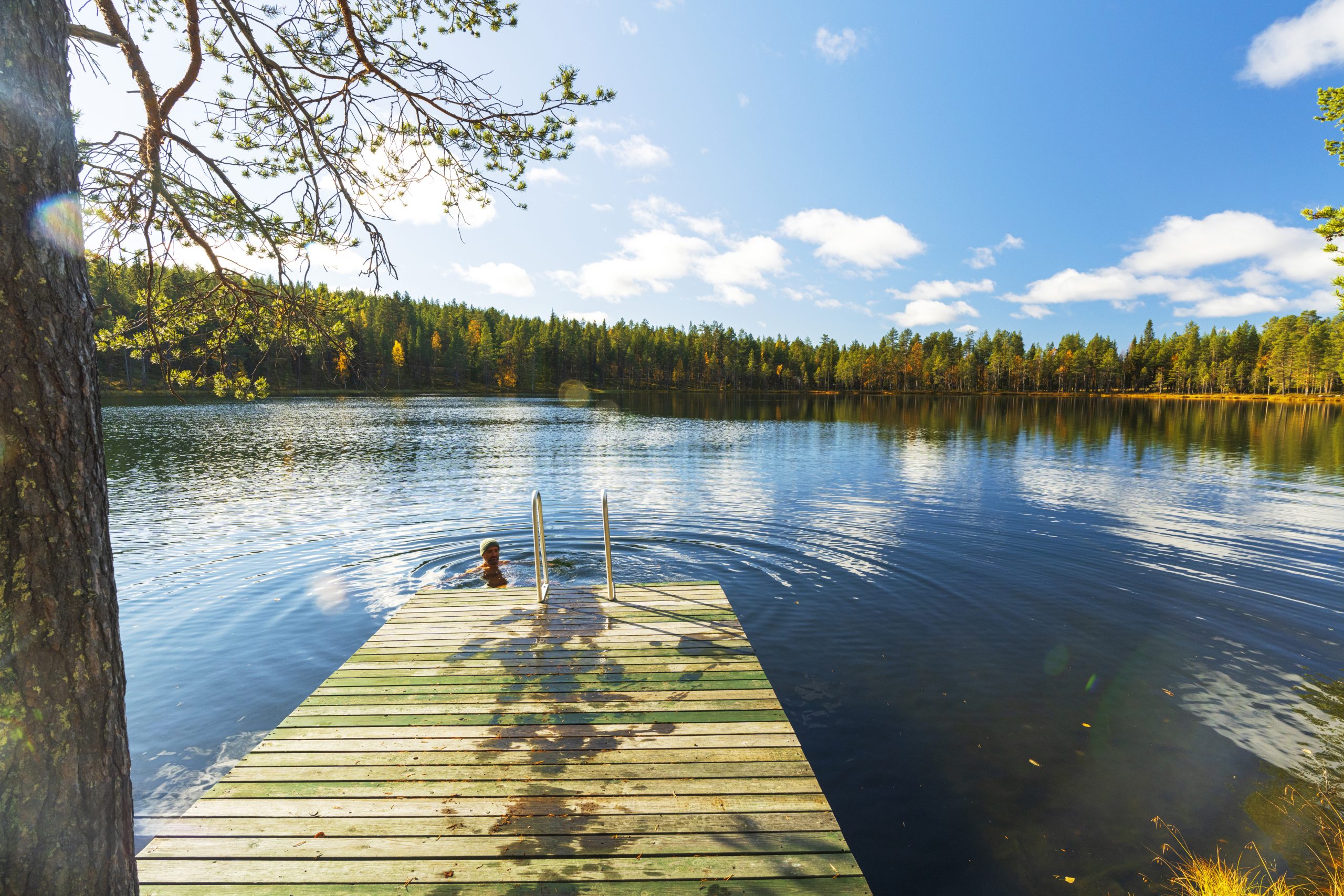As the leaves begin to turn and the air gets crisper, many of us are still drawn to the beauty and tranquility of Minnesota’s lakes. Whether you’re enjoying a final swim, paddling in a kayak, or simply wading along the shoreline, it’s important to be aware of potential health risks associated with recreational water as we transition into the cooler months.
While our lakes offer fantastic opportunities for recreation, they can also harbor microorganisms that can cause illness. As the water cools and conditions change, the risk of certain waterborne illnesses can actually increase. That’s why we at CHI St. Joseph’s Health want to provide you with some information to help you stay safe and healthy while enjoying our beautiful lakes this fall.
What are Waterborne Illnesses?
Waterborne illnesses are caused by coming into contact with water contaminated by disease-causing microbes or pathogens. These pathogens can enter the water through various sources, including animal waste, sewage runoff, and even naturally occurring organisms. While diarrhea and vomiting are the most common symptoms, waterborne illnesses can manifest in a variety of ways.
Common Waterborne Illnesses to Watch Out For:
The Minnesota Department of Health identifies several waterborne illnesses that can be contracted through recreational water activities. Here are a few to be aware of:
- Swimmer’s Itch (Cercarial Dermatitis): This is a common skin rash caused by a parasite that burrows into the skin. It causes itchy, red bumps and usually resolves on its own within a week or two.
- Swimmer’s Ear (Otitis Externa): An infection of the outer ear canal, often caused by bacteria found in water. Symptoms include ear pain, itching, and drainage.
- Harmful Algal Blooms (HABs): Also known as blue-green algae, these blooms can produce toxins that can cause skin irritation, nausea, vomiting, and even liver damage. Avoid swimming in areas with visible algal blooms. To be cautious, have pets stay out of visible algal blooms areas as well.
- Cryptosporidiosis (Cryptosporidium): A parasitic infection that causes diarrhea, stomach cramps, and dehydration.
- Giardiasis (Giardia): Another parasitic infection with similar symptoms to Cryptosporidiosis.
- Hot Tub Rash (Pseudomonas Dermatitis/Folliculitis): A skin infection caused by bacteria found in poorly maintained hot tubs and swimming pools. It presents as itchy, red bumps or pus-filled blisters.
Other potential illnesses include:
- Cyclosporiasis (Cyclospora spp.)
- Escherichia coli O157:H7 Infection (E. coli O157) and Hemolytic Uremic Syndrome (HUS)
- Legionellosis (Legionella)
- Naegleria fowleri and Primary Amebic Meningoencephalitis
- Norovirus Infection (aka Norwalk virus, calicivirus, viral gastroenteritis)
- Shigellosis (Shigella)
Symptoms to Watch For:
Be aware of the following symptoms, which could indicate a waterborne illness:
- Diarrhea
- Vomiting
- Stomach cramps
- Nausea
- Skin rash or irritation
- Ear pain or drainage
- Respiratory problems
- Eye irritation
How to Protect Yourself:
While it’s impossible to eliminate all risks, you can take steps to minimize your chances of contracting a waterborne illness:
- Avoid swallowing lake water.
- Shower with soap and water after swimming.
- Dry off thoroughly with a clean towel.
- Avoid swimming in areas with visible algal blooms or posted warnings.
- Don’t swim if you have diarrhea.
- Wash your hands frequently, especially before eating.
- If you have open cuts or sores, cover them with a waterproof bandage.
What to Do If You Suspect a Waterborne Illness:
If you experience any of the symptoms listed above after swimming in a lake, consult with your doctor. It’s also important to report your suspected waterborne illness to the Minnesota Department of Health. You can find the reporting information on their website. https://www.health.state.mn.us/diseases/waterborne/index.html
Enjoy the Fall, Stay Informed, and Stay Healthy!
We hope this information helps you enjoy the beauty of our lakes safely this fall. By being aware of the potential risks and taking precautions, you can minimize your chances of getting sick and make the most of the season.
From all of us at CHI St. Joseph’s Health, we wish you a happy and healthy fall!

